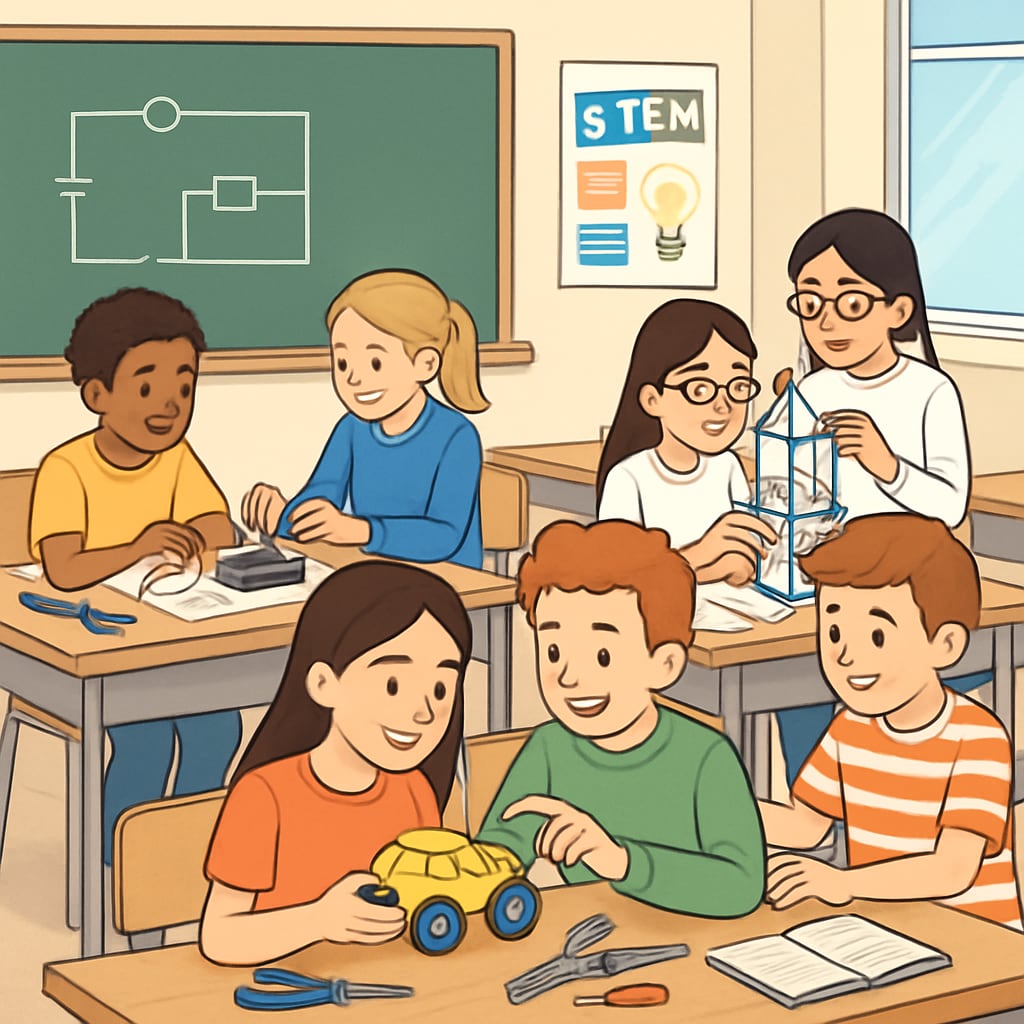Preparing children for future careers in design engineering, master’s degrees, professional development, and degree selection starts in the classroom. Developing engineering design thinking during the K12 education stage equips young learners with critical problem-solving skills and creativity essential for their academic and professional journeys. This article explores how parents and educators can implement strategies to foster engineering design thinking and outlines the long-term benefits for students.
Why Engineering Design Thinking Matters in K12 Education
Engineering design thinking involves a structured approach to problem-solving, emphasizing creativity, iteration, and collaboration. In today’s rapidly evolving job market, these skills are crucial for success in STEM (Science, Technology, Engineering, and Mathematics) fields. By nurturing this thinking early, K12 students can gain a competitive edge, preparing them for advanced studies such as engineering-focused master’s degrees and future career development.
Several studies have shown that early exposure to engineering concepts boosts cognitive abilities and fosters a mindset of innovation. For example, introducing project-based learning (PBL) in classrooms provides students with hands-on opportunities to tackle real-world problems. According to Wikipedia’s definition of PBL, this method integrates critical thinking and design processes, making it an effective tool for developing engineering design thinking.

Strategies to Foster Engineering Design Thinking in K12
Implementing engineering design thinking in K12 schools doesn’t require advanced machinery or expensive technologies. It begins with creating an environment that encourages curiosity and experimentation. Here are some effective strategies:
- Introduce Engineering Challenges: Encourage students to solve age-appropriate engineering problems, such as designing bridges with limited materials or building sustainable models.
- Incorporate Technology: Use tools like 3D modeling software and coding platforms to help students visualize and prototype their ideas.
- Encourage Collaboration: Assign group projects that require teamwork, enabling students to learn from each other’s perspectives.
- Focus on Iteration: Teach students that failure is part of the design process. Encourage them to refine their work based on feedback.
- Connect to Real-World Applications: Highlight how engineering impacts daily life, from architecture to environmental solutions.
Educators can also integrate interdisciplinary approaches by combining engineering design thinking with subjects like math, art, and science. For instance, exploring the golden ratio in engineering design provides a fascinating intersection of mathematics and creativity.

Preparing Students for Advanced Degrees and Careers
Fostering engineering design thinking during K12 education lays the foundation for future academic and career success. Students who develop these skills are better equipped to pursue advanced degrees, such as a master’s program in design engineering. These programs often emphasize innovation, leadership, and technical expertise, making them highly desirable in today’s global economy.
Additionally, early exposure to engineering concepts can help students make informed choices about their educational paths. Parents and educators should guide students in exploring career options, discussing the relevance of design engineering in various industries, and highlighting the importance of degree selection tailored to their interests and goals.
For example, students interested in sustainable practices might choose degrees focusing on environmental engineering, while those fascinated by technology could explore robotics or software engineering programs. In both cases, the foundation built during their K12 years will play a pivotal role in shaping their success.
Conclusion: Building a Future of Innovators
Developing engineering design thinking during the K12 education stage is not just about preparing students for academic achievements but also about equipping them with life skills. By fostering creativity, collaboration, and resilience, educators and parents can help students excel in design engineering, pursue advanced degrees, and thrive in their professional careers.
As a result, investing in engineering-focused education today will yield a generation of innovators capable of tackling the world’s challenges tomorrow. Whether it’s through project-based learning, interdisciplinary approaches, or real-world applications, the strategies outlined in this article can transform classrooms into incubators for future leaders in STEM fields.


